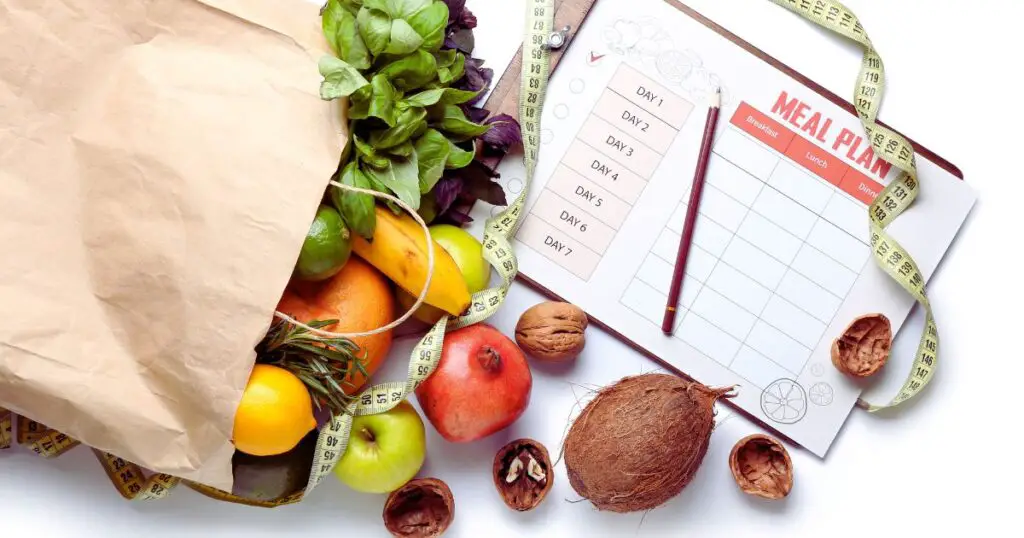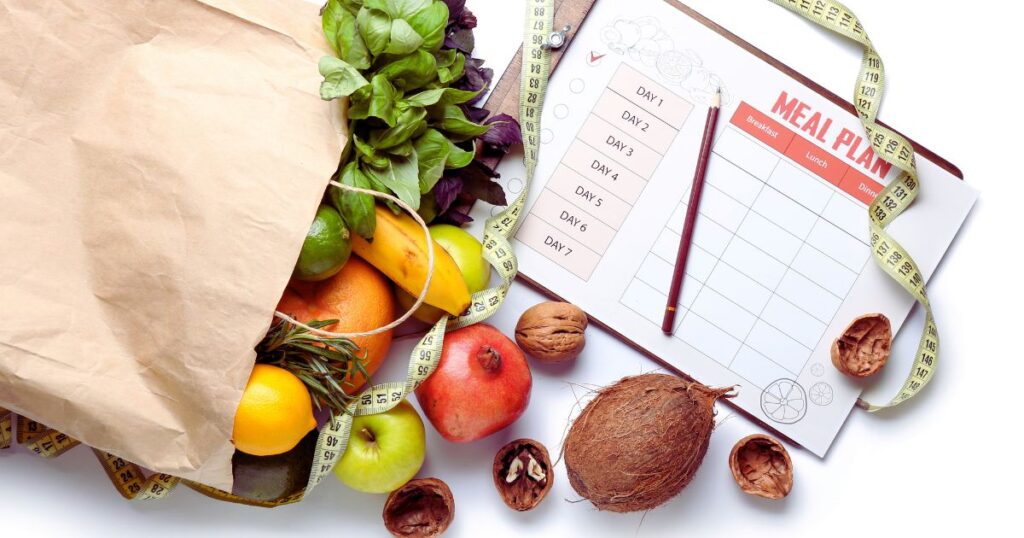As an Amazon affiliate, I may earn from qualifying purchases. Please read our Disclaimer and Privacy Policy.
I wish someone had suggested a high-fiber post post tummy-tuck meal plan after I had my surgery.
The surgery, known as abdominoplasty, removes excess skin and fat from the lower abdomen while tightening abdominal muscles.
The procedure gave me exactly what I wanted…a flatter stomach. It also removed the excess skin hanging loose from my first pregnancy. I looked and felt fantastic!
Disclaimer
This blog post is for informational purposes only and should not be considered medical advice.
Always consult your plastic surgeon, a registered dietitian, or a qualified healthcare professional before making any dietary changes, especially after a surgical procedure.
Individual recovery needs and dietary requirements may vary. Reliance on any information provided in this article is solely at your own risk.

My Nurse Pleaded With Me To Eat Healthier
The truth is, I thought I was eating a healthy diet. Sadly, my only concern was staying slim. I put a low-calorie diet over a healthy one. So, instead of eating foods rich in fiber, protein, and nutrients, I ate things like rice crackers.
I know! Don’t judge me. I’ve learned a lot about nutrition since then.
Eat Something Healthier!
I suppose the cosmetic surgeon’s job is to offer a safe surgery. The transaction involved a short consultation beforehand where he gave me a rough idea of what I was in for.
I booked the plastic surgery, paid a huge sum of money, and showed up on the day of the surgery.
Nobody spoke to me about a post tummy tuck meal plan.
Even the nurse who was clearly disgusted with my snacking habits didn’t offer any sort of real advice. I suppose that wasn’t her job, but I think a better care plan would have involved a more discussion on weight management going forward.
According to Dr. Matthew Schulman, M.D., Board Certified Plastic Surgeon, “you should be standing fully upright four to six weeks post-surgery.”
I could not stand completely upright for 12 weeks.

Would My Recovery Have Been Quicker With a Post Tummy Tuck Meal Plan?
According to “The Ultimate Guide to Eating After Tummy Tuck” by LIV Plastic Surgery, the answer is yes.
The reaon is because a post tummy-tuck meal plan can significantly aid recovery by providing the body with the nutients it needs to heal efficiently.
Apparently a diet of muffins and rice cakes won’t (and didn’t) cut it!
To be fair, the recovery time for a tummy tuck can vary depending on the individual’s health, age, the extent of the surgery, and their adherence to postoperative care instructions.
Factors That Influence Recovery
I was 44 years old when I had the surgery. Although I felt young, it was probably considered on the older side for this type of procedure. That said, I was otherwise healthy and had no major complications.
Good nutrition, hydration, gentle movement, and patience with the healing process will contribute to a smoother recovery. Ultimately, it’s more than proper nutrition that contributes to a quicker recovery.
Other factors include:
Health Status
Good physical health and a healthy lifestyle promote faster recovery.
Extent of Surgery
A mini tummy tuck generally has a shorter recovery time compared to a full tummy tuck.
Postoperative Care
Following your surgeon’s advice, such as wearing compression garments, avoiding smoking, and attending follow-up appointments, is critical.
Complications
Rare issues like infection or wound healing problems can prolong recovery.
Maintaining good nutrition, staying hydrated, engaging in gentle movement, and being patient with the healing process contribute to a smoother recovery. Always consult your surgeon for advice tailored to your situation.

The Importance of a Post Tummy Tuck Meal Plan
After undergoing a tummy tuck, your body requires specific nutrients to support tissue repair, new cell generation, and the overall healing process.
A balanced diet, high in fiber, lean proteins, and essential vitamins, plays an important role in reducing the risk of complications and ensuring the best possible results.
Proper nutrition also helps regulate blood sugar levels, supports a healthy weight, and minimizes bloating and discomfort post-surgery.
The First Step: Clear Liquids and Soft Foods
Immediately following tummy tuck surgery, your diet will be limited to clear liquids to prevent nausea from general anesthesia and pain medication.
These include:
- Broth-based soups
- Herbal teas
- Gelatin
- Plenty of water
Transition to soft foods such as yogurt, applesauce, and soft cheeses as your body tolerates solid foods.
Avoid fatty acids and foods that may strain your digestive system during this delicate stage.

High-Fiber Foods for Optimal Healing
High-fiber foods aid digestion and prevent constipation. I can attest to this It’s a common issue after surgery due to pain medications and limited physical activity.
Incorporate the following high-fiber options into your recovery diet:
Whole grains
Brown rice, whole-grain cereals, and whole-grain bread
Leafy greens
Spinach, kale, and Swiss chard for essential vitamins
Fresh fruits
Apples, pears, and citrus fruits like oranges (high in Vitamin C for skin repair)
Raw vegetables
Carrots, cucumbers, and celery as digestible snacks
Legumes
Lentils and black beans for protein and fiber
Protein: The Building Block for Tissue Repair
Lean proteins are essential for tissue repair and maintaining muscle mass.
The best foods for this include:
Lean meats
Chicken, turkey, and fish rich in omega-3 fatty acids
Plant-based proteins
Tofu and tempeh
Protein shakes
Look for those with no added sugars and high amino acid content
Dairy products
Cottage cheese and Greek yogurt
Incorporating Healthy Fats
Healthy fats, such as those found in olive oil, nuts, and avocados, have anti-inflammatory properties that aid in the healing process and support heart health.
Avoid unhealthy fats found in fast food and processed snacks.
Hydration: The Foundation of Recovery
Staying hydrated is critical to healing.
Drink plenty of water throughout the day to keep your body’s systems functioning optimally and to flush out toxins.
Herbal teas and water-rich fresh fruits, such as watermelon and oranges, can supplement your fluid intake.

Foods That Shouldn’t Be On Your Post Tummy Tuck Meal Plan
Certain foods can hinder recovery or cause complications.
Steer clear of:
Unhealthy fats
Fried foods and trans fats
Crash diets
They deprive your body of essential nutrients
High amounts of sugar
Can lead to inflammation
Alcohol consumption
Slows the healing process
Red meat
Difficult to digest and can cause bloating
Example High-Fiber Meal Plan
Breakfast
- Whole-grain cereal with almond milk
- Fresh fruits like berries or an orange
- Herbal tea
Snack
- A handful of nuts and seeds
- A small protein shake
Lunch
- Grilled chicken breast
- Quinoa salad with spinach, cherry tomatoes, and olive oil
- A side of steamed broccoli
Snack
- Greek yogurt with a sprinkle of flaxseeds
Dinner
- Baked salmon with a drizzle of olive oil
- Brown rice
- Steamed asparagus and carrots
Dessert
- A bowl of fresh fruit
Maintaining Long-Term Results
Adopting a nutritious diet post-surgery not only aids in recovery but also helps maintain the results of your tummy tuck.
Incorporate regular exercise (as approved by your plastic surgeon), a balanced diet, and proper hydration to support your healthy weight and overall health.
Final Thoughts
A high-fiber, nutrient-rich diet is the best way to ensure optimal healing and long-term results after a tummy tuck.
By following these guidelines and listening to your plastic surgeon’s advice, you can enhance your recovery process and enjoy the results of your cosmetic surgery for years to come.
For more information about tummy tuck procedures and recovery tips, consult your plastic surgeon or a registered dietitian.
Sources:
- American Society of Plastic Surgeons (www.plasticsurgery.org)
- Mayo Clinic (www.mayoclinic.org)
- National Institutes of Health (www.nih.gov)

